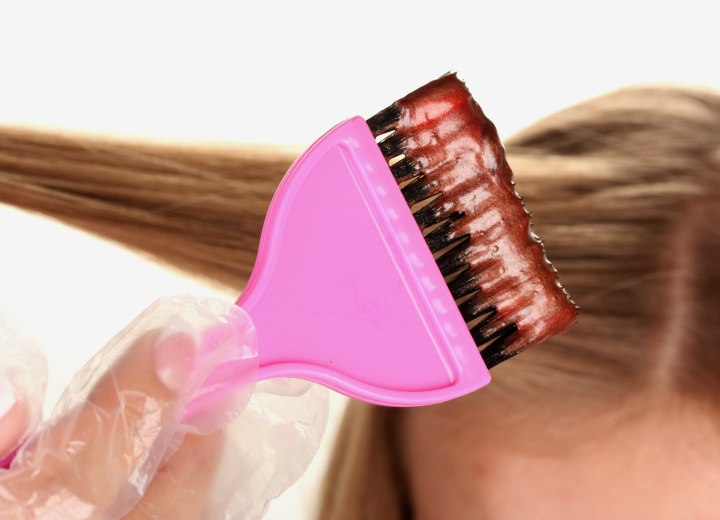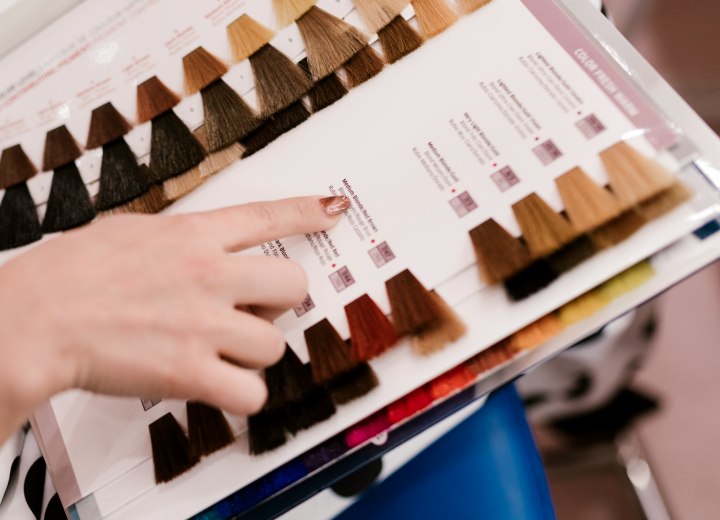Hair Color Allergies

We here at hairfinder.com have long been advocates of patch tests prior to any chemical service an individual undergoes. These tests are meant to provide a warning of sensitivities to chemicals used in these services in a controlled manner so as to minimize the potential harm to the individual. Better a small, irritated, and itchy spot than a horrendously painful scalp if you prove to be sensitive.
Recently, however, news reports indicated that there is an increase in the number of reported (and diagnosed) allergic reactions to hair dye. This has been attributed to the fact that younger and younger individuals are coloring their hair.
Another factor that is believed to be a contributor to the spate of allergic reactions is the global economic downturn. Since hair dye is commonly used to cover gray hair, the crisis has led many individuals to use "do-it-yourself" hair coloring kits. It's these cases, along with occasional disregard for pre-service testing, that are believed to have contributed to the situation.
Para-phenylenediamine (PPD)
The primary culprit in allergic reactions to hair color formulas has been identified as a chemical called Para-phenylenediamine (PPD). PPD is the main coloring agent found in permanent and semi-permanent hair dyes. The chemical is also found in henna tattoos, which are marketed to target young people. The marketing of these tattoos is also thought to be a major contributor to the rise in allergic reactions.
Many countries already have restrictions on the use of PPDs. In some countries, the chemical is even banned from use. However, it has not been banned in countries like New Zealand, though new regulations mean that as of July 2009, PPD-inclusion must be disclosed on product labeling – including a warning of allergic reaction risks.

It is important to remember that whether you are going to a salon or doing your own color at home, you should ALWAYS perform a patch test before having the coloring service. Most packages of home color products include specific instructions on performing the patch test. These tests generally involve swabbing a small amount of the chemical mixture onto the skin in an innocuous location, then waiting a designated period of time for a reaction to become apparent.
The amount of time an individual should wait is usually listed as either 48 or 72 hours. It should be noted, however, that medical professionals in the US have noted that sensitivity reactions to PPD can emerge as many as 10 days after initial exposure. This delayed reaction has been seen primarily with the temporary/henna tattoos containing what is referred to as "black henna".
Furthermore, just because you have used a color product before with no issues does NOT mean you are safe to use that product without testing. Allergic reactions commonly emerge after long periods of time where the irritant is something used regularly without prior issues.
I cite the story of British hairdresser Graham Howe who developed allergies to the PPD in the hair color he worked with, the latex of his working gloves, and the nickel in his cutting shears AFTER twenty-one years as a hairdresser.No, you must always perform a patch test before any chemical service, just to be safe. Always read the product packaging carefully and follow the guidelines for patch testing precisely.
List of Phenylenediamines
If you are concerned about whether or not your particular color product contains PPD, the following is a list of phenylenediamines (or related chemicals):
Benzenediamine, Diamino-Benzene, Diaminobenzene, Benzenediamine, Benzenediamine Ethanedioate, Phenylene diamine, Phenylenediamine, Aminoaniline, 6PPD, APCO 2330, Aspartyl-Pyridoxal-5'-Phosphate, C02454, CI Developer 11, Developer 11, Developer C, Developer H, Developer M, Direct Brown BR, Direct Brown GG, Fenylenodwuamina, Fouramine 1, m-Aminoaniline, m-Benzenediamine, m-Diaminobenzene, m-Fenylendiamin, m-Phenylene diamine, M-Phenylenediamine, meta-Aminoaniline, meta-Benzenediamine, meta-Diaminobenzene, Metaphenylenediamine, p-Aminoaniline, p-Benzenediamine, p-Diaminobenzene, p-Fenylendiamin, p-Phenyldiamine, p-Phenylene diamine, p-Phenylenediamine, PARAPHENYLEN-DIAMINE, Paraphenylenediamine, PLP-ASP, PPD, Renal PF.
©Hairfinder.com